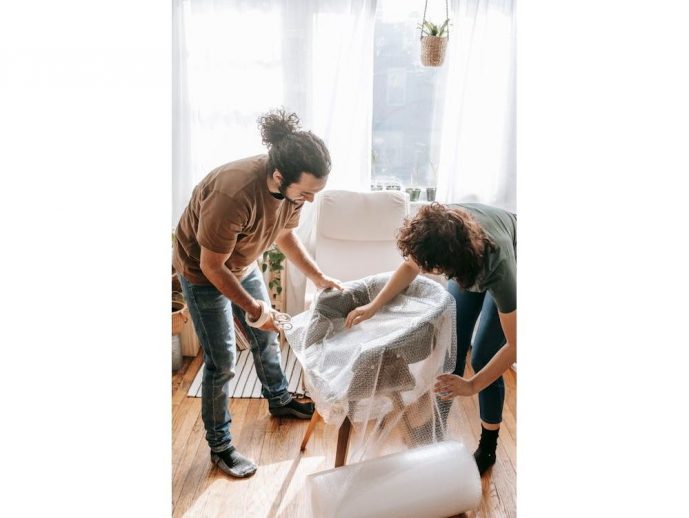Categories more
- Adventures (17)
- Arts / Collectables (15)
- Automotive (37)
- Aviation (11)
- Bath, Body, & Health (77)
- Children (6)
- Cigars / Spirits (32)
- Cuisine (16)
- Design/Architecture (22)
- Electronics (13)
- Entertainment (4)
- Event Planning (5)
- Fashion (46)
- Finance (9)
- Gifts / Misc (6)
- Home Decor (45)
- Jewelry (41)
- Pets (3)
- Philanthropy (1)
- Real Estate (16)
- Services (23)
- Sports / Golf (14)
- Vacation / Travel (60)
- Watches / Pens (15)
- Wines / Vines (24)
- Yachting / Boating (17)
13 Tips to Protect Your Furniture During a Long-distance Move
Published
06/03/2024The prospect of moving long distances can be both exciting and overwhelming. Amidst the chaos of planning, packing, and coordination, it’s easy to forget about the safety of your furniture. Ensuring that your beloved pieces arrive intact at your new home should be a top priority during this process. In this guest post, we will share ten essential tips for protecting your furniture during a long-distance move.
1. Take Detailed Inventory:
Before packing, create an inventory list including all furniture items you plan to move. This will help you keep track of each piece and serve as a reference in case anything goes missing or gets damaged.
2. Disassemble with Care:
Disassemble any furniture that can be taken apart safely before the move to reduce the risk of breakage or scratches. Use zippered plastic bags to keep small bolts or screws carefully labelled and taped onto each dismantled piece for easy reassembly later. Outside help is sometimes required to disassemble some heavy furniture, and you can hire trained movers for that. For example, Auckland furniture movers disassemble grand pianos before moving and reassemble them at the destination. Only a specialist with the right equipment can do something like this, so look for a local moving company to do the heavy lifting.
3. Wrap It Up:
Properly wrapping your furniture is crucial for preventing scratches and damage during transportation. Cover each item in high-quality moving blankets or bubble wrap before securing them with tape. Pay special attention to corners and delicate areas prone to damage.
4. Don't Skip Protective Padding Materials:
In addition to the initial layer of wrapping, it is recommended to utilise additional protective padding materials for an extra layer of security—corner protectors and foam padding can offer added protection during transit.
5. Maximizing Space:
Efficiency is key when packing furniture for a long-distance move—not only for keeping costs down but also for ensuring better protection against damage due to shifting in transit. Optimise space inside moving trucks by disassembling larger pieces whenever possible.
6. Give Attention To Glass And Mirrors:
Given their fragile nature, glass table tops, mirrors, and framed artwork require extra care. Use specialised packing materials like mirror boxes, which provide reinforced protection and minimise the chances of breakage.
7. Evenly Distribute Weight:
Proper weight distribution is essential to keeping furniture safe during transportation. By strategically placing heavier furniture items evenly throughout the space, you can avoid overly heavy or lopsided loads within any moving truck or container.
8. Plan Ahead for Everyone's Safety:
Successfully securing your delicate items is one thing, but ensuring everyone's safety during a long-distance move is equally important. To minimise personal injury risks, ascertain that walkways are clear and furniture can be moved easily throughout the process.
9. Time Your Move Strategically:
Extreme weather conditions can adversely impact the safety of your furniture during transportation. Consider timing your move for optimal weather conditions to avoid exposure to intense heat, cold, rain, or snow.
10. Choose Professional Movers Carefully:
When entrusting your precious furniture to professional movers, do thorough research. Read customer reviews and ask for recommendations before hiring a trusted moving company with experience in long-distance moves.
11. Safely Secure Furniture in Transit:
To protect your furniture from shifting, ensure it is properly secured within the moving truck or container. Use straps or ropes to secure larger items, preventing them from sliding and causing potential damage during transport.
12. Protect Upholstered Furniture:
Upholstery can be vulnerable to stains, tears, and other damage during a move. It's essential to thoroughly clean upholstered furniture beforehand and apply fabric protection spray where appropriate. Plastic covers can also protect sofas, chairs, and mattresses from dirt or moisture during transportation.
13. Utilize Professional Packing Services:
If you're hesitant about your packing abilities or have valuable and delicate pieces of furniture that require extra care, consider leveraging professional packing services offered by moving companies. Their expertise can ensure optimal furniture protection throughout the moving process.
Conclusion
A long-distance move doesn't have to be synonymous with damaged or broken furniture. By following these ten essential tips, you can ensure the safe passage of your beloved pieces to their new home. From careful wrapping and padding to strategic packing and timing, taking active measures will greatly reduce stress levels while providing peace of mind that your furniture will arrive at its destination unharmed—ready for you and your family to create new memories together.















